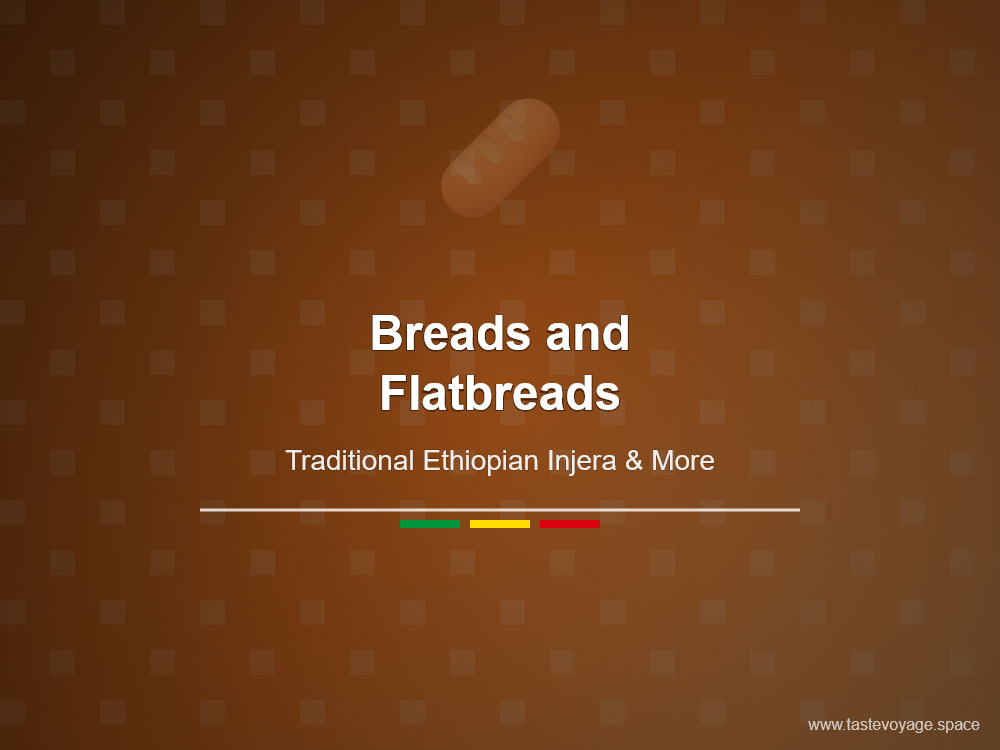How to Make Authentic Ethiopian Ceremonial Flatbread
Travel the World Through Food >> Breads and Flatbreads>>Ethiopian Cuisine>> How to Make Authentic Ethiopian Ceremonial Flatbread
How to Make Authentic Ethiopian Ceremonial Flatbread
How to Make Ethiopian Ceremonial Flatbread
Ethiopian ceremonial flatbread, also known as injera, is more than just a staple food; it is a symbol of cultural heritage, community, and tradition. This unique bread has a rich history rooted in Ethiopian culinary practices, where it plays a central role in celebrations, rituals, and daily life. Its distinctive flavor, texture, and appearance make it a fascinating subject for anyone eager to explore Ethiopia’s vibrant food culture.
The Cultural Significance of Ethiopian Flatbread
In Ethiopia, injera is woven into the fabric of social and cultural life. It is traditionally served during important gatherings, religious festivities, and family celebrations. The process of making and sharing injera fosters a sense of unity and hospitality, embodying Ethiopian values of community and togetherness.
This flatbread’s round shape and spongy texture are symbolic. It often represents completeness and unity, making it an ideal centerpiece for communal meals. Serving injera is a sign of respect and generosity, inviting guests to partake in shared tradition and history.
Culinary Significance and Unique Characteristics
Injera is celebrated for its unique fermentation process, which imparts a tangy flavor and a distinctive aroma. Made primarily from teff flour, a grain native to Ethiopia, the bread boasts nutritional benefits such as high calcium content and rich dietary fiber. The fermentation process also contributes to its light and airy texture, allowing it to absorb flavors from accompanying dishes like Stews and vegetable dishes.
Ethiopian ceremonial flatbread is not just a vessel for food but also an integral part of the dining experience. Its porous surface serves as a natural plate that can hold various spicy and savory condiments, enhancing the overall flavor profile of the meal. The preparation of injera reflects patience and skill, often involving traditional techniques that have been passed down through generations.
An Invitation to Explore Ethiopia’s Culinary Heritage
The beauty of Ethiopian ceremonial flatbread lies in its storytelling power. Each bite offers a glimpse into Ethiopia’s history, land, and cultural values. Whether enjoyed during a festive occasion or as a daily meal, injera connects people through shared culinary traditions.
For those interested in exploring Ethiopian Cuisine, understanding the cultural and culinary significance of injera enriches the experience. It invites appreciation of the craftsmanship behind its making and the symbolic meanings it carries. Embracing this traditional flatbread provides an Authentic Taste of Ethiopia’s vibrant cultural tapestry.
Conclusion
Ethiopian ceremonial flatbread is more than a food item; it is a cherished cultural artifact that celebrates community, tradition, and history. Its unique qualities make it a standout in the world of global cuisine. By appreciating injera’s cultural value and culinary significance, food lovers can deepen their understanding of Ethiopia’s rich heritage and enjoy the timeless beauty of this iconic bread.
